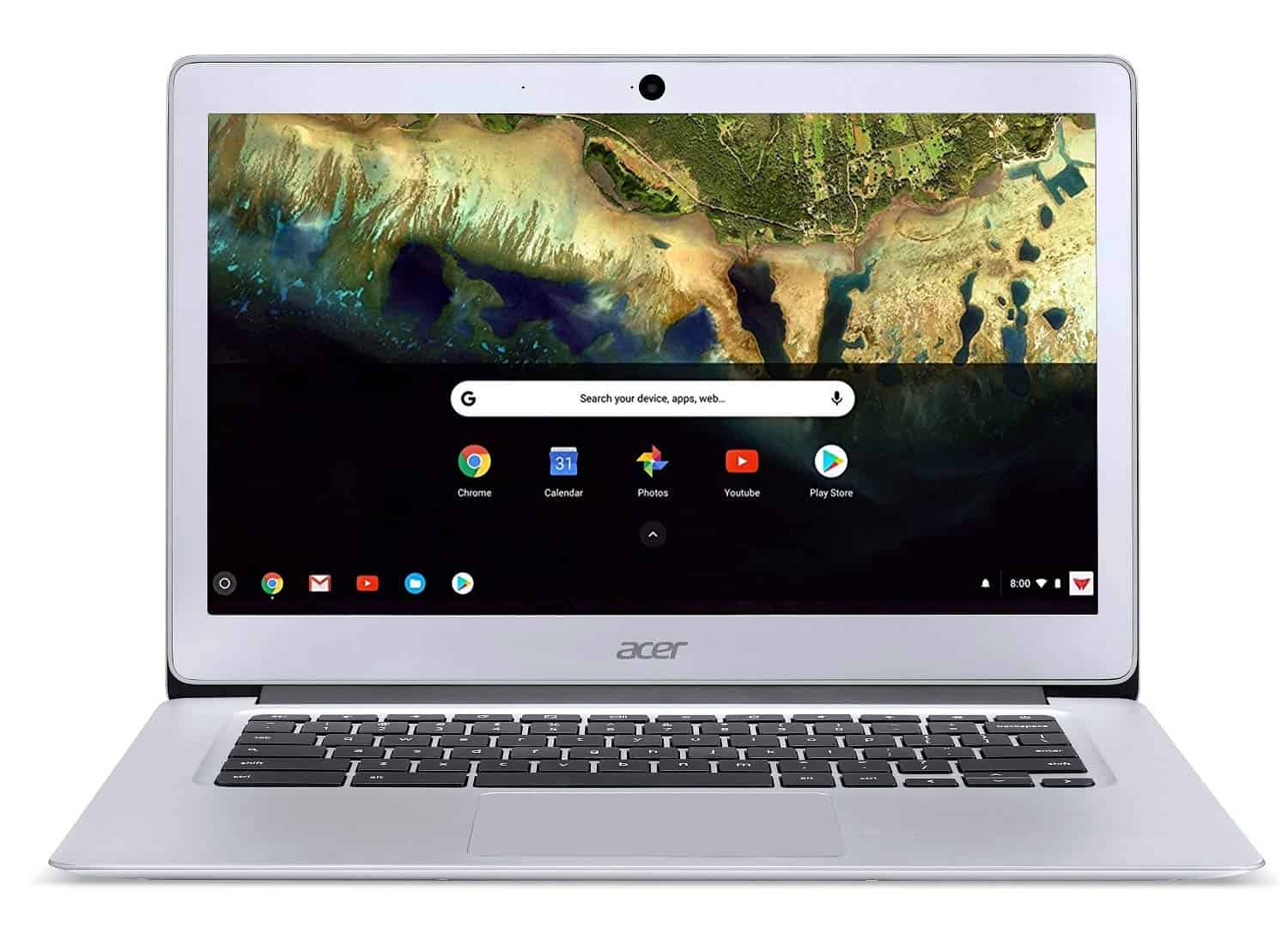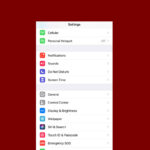Crosh commands are a valuable resource for Chromebook users who want to explore their device’s capabilities in greater depth. These commands, which can be accessed through the Chrome OS developer shell, provide access to advanced features and diagnostics that go well beyond the standard settings. Whether you’re checking your network connection or examining your Chromebook’s system processes, crosh commands are essential tools.
For those who are new to Chromebooks or looking to get more out of their devices, understanding crosh commands may initially seem overwhelming. However, with some guidance, anyone can begin using these powerful commands to enhance their Chromebook experience. This article aims to simplify crosh commands, providing a clear and concise overview that is easy to follow.
Essential Crosh Commands for Chromebook Users
Crosh, short for “Chrome OS shell,” is a command-line interface that gives you more control over your Chromebook. It’s a powerful tool that can help you troubleshoot problems, manage your system, and access advanced features. Here are some essential Crosh commands every Chromebook user should know:
Accessing Crosh
To open Crosh, simply press Ctrl + Alt + T on your Chromebook keyboard. This will open a new tab in your Chrome browser with a command prompt.
Basic Commands
help: This command displays a list of available Crosh commands.help_advanced: This command shows a list of more advanced commands, including those for debugging and troubleshooting.uptime: This command shows how long your Chromebook has been running since it was last restarted.connectivity: This command checks your network connection and displays information about your Wi-Fi or Ethernet connection.top: This command displays a list of running processes and their CPU and memory usage.
Network Troubleshooting
ping [website address]: This command sends a request to a website and measures the response time. It’s helpful for diagnosing network connectivity issues.network_diag: This command runs a series of network diagnostic tests and generates a report that you can save or share.tracepath [website address]: This command traces the route that packets take from your Chromebook to a website, helping you identify network bottlenecks.
System Information and Management
battery_test [seconds]: This command tests your Chromebook’s battery and displays information about its health and capacity.memory_test: This command checks your Chromebook’s memory for errors.storage_status: This command shows information about your Chromebook’s storage devices, including their capacity and free space.set_time: This command allows you to manually set the time on your Chromebook.
Advanced Commands
ssh: This command allows you to connect to other computers or servers using Secure Shell.scp: This command allows you to securely copy files between your Chromebook and other computers or servers.tpcontrol: This command allows you to control the touchpad settings on your Chromebook.keyboard_diag: This command runs a diagnostic test on your Chromebook’s keyboard.
| Command | Description |
|---|---|
help | Displays a list of available Crosh commands |
uptime | Shows how long your Chromebook has been running |
connectivity | Checks your network connection |
ping | Tests network connectivity to a website |
battery_test | Tests your Chromebook’s battery |
memory_test | Checks your Chromebook’s memory for errors |
ssh | Connects to other computers using Secure Shell |
This is not an exhaustive list of Crosh commands, but it covers some of the most useful ones for everyday Chromebook users. By familiarizing yourself with these commands, you can gain more control over your Chromebook and troubleshoot problems more effectively.
Taking Screenshots on Your Chromebook
While Crosh offers powerful command-line tools, Chrome OS also provides convenient ways to capture screenshots. Here’s a quick guide:
- Full Screenshot: Press Ctrl + Show Windows. This captures an image of your entire screen.
- Partial Screenshot: Press Ctrl + Shift + Show Windows. This allows you to select a specific area of your screen to capture.
Screenshots are automatically saved to your Chromebook’s “Downloads” folder.
Table Of Crosh Commands
| Command | Description | Useful for |
|---|---|---|
help | Displays a list of general Crosh commands. | Getting started and exploring functionalities. |
help_advanced | Lists debugging and advanced commands. | Advanced troubleshooting or developers. |
help <command> | Provides specific information and usage details for a particular command. | Learning the exact usage of a command. |
uptime | Shows how long the Chromebook has been running and the number of logged-in users. | Monitoring system uptime and identifying potential issues. |
set_time | Allows manual adjustment of the system time. | Setting the correct time, especially after traveling to different time zones. |
connectivity (may not work on all devices) | Provides detailed information about network connections, including WiFi and Bluetooth. | Troubleshooting network connectivity problems. |
ping [website] | Performs a ping test to a specific website, measuring the response time. | Diagnosing internet connection speed and identifying potential network issues. |
top | Acts as a simplified task manager, displaying a list of running processes and their CPU usage. | Monitoring resource usage and identifying processes consuming high CPU. |
memory_test | Runs a diagnostic test on the Chromebook’s memory. | Checking for potential memory errors that could cause instability. |
shell (Developer Mode only) | Opens a full Bash shell environment, providing access to more advanced Linux commands. | Advanced usage and troubleshooting for developers (requires Developer Mode). |
ipaddrs | Displays the Chromebook’s IP address(es) – ipaddrs -4 for IPv4 and ipaddrs -6 for IPv6. | Identifying your Chromebook’s network address for configuration purposes. |
| `update_over_cellular [enable | disable]` (Developer Mode only) | Enables or disables automatic software updates over cellular data networks. |
Key Takeaways
- Crosh commands offer Chromebook users access to advanced settings and diagnostics, enhancing device interaction through a simple text-based interface accessible by pressing Ctrl + Alt + T.
- They provide a range of functionalities from checking internet speed, battery health, to system info, acting like a Swiss Army knife for Chrome OS that requires no external software or deep technical knowledge.
- Accessing Crosh commands is straightforward, requiring users to open the Crosh terminal via a simple keyboard shortcut, where they can type and execute commands directly.
- For beginners, common commands like battery_test, network_diag, system_info, and lan_scan offer insights into device health and performance, making troubleshooting and optimization accessible to all users.
- Advanced users benefit from Crosh commands such as tracepath, ping, ssh, and memory_test, unlocking deeper customization, control, and troubleshooting capabilities beyond basic use.
- Crosh commands are invaluable for troubleshooting common Chromebook issues, providing users the tools to diagnose network problems, battery health, and performance issues, thereby reducing dependency on external assistance.
What are Crosh Commands?
Crosh commands stand as shortcuts for Chromebook users to access a variety of advanced settings and diagnostics that aren’t usually available through the standard menus. When you’re using a Chromebook, these commands allow you to dive deeper into its system functionalities. To activate them, all it takes is to open the Crosh terminal.
The Crosh terminal might sound pretty fancy, but it’s simply a text-based interface. By pressing Ctrl + Alt + T on the keyboard, users are propelled into this command-line environment. Think of it like opening a secret door that leads you to a room full of levers and buttons, each performing a specific task to tweak your Chromebook’s performance or to troubleshoot issues.
Commands range from checking your internet connection speed to getting detailed battery reports. With these tools at your disposal, gaining insights into the health and efficiency of your Chromebook becomes straightforward. No need for external software or deep technical knowledge. Crosh commands put power right at your fingertips.
It’s like having a Swiss Army knife for your Chromebook; versatile, powerful, and incredibly useful for those who know how to wield it. While the idea of entering commands might seem daunting at first, the reality is much simpler. You don’t need to be a tech wizard to use them. With a few tries, anyone can start to use these commands to their advantage.
Remember, while exploring Crosh commands, that this resource is built into the Chrome OS for a reason. It’s there to make life easier and to enhance the Chromebook experience. Whether you’re a student, a professional, or just a curious user, understanding and utilizing these commands can significantly elevate how you interact with your device.
Accessing Crosh Commands
Getting into the world of Crosh commands on a Chromebook is straightforward. Users just need to hit two keys. First, they press the “Ctrl” and “Alt” buttons together. Then, while holding those down, they tap “T”. This action springs open the Crosh terminal, a simple text interface ready for commands.
This terminal is where users can type in various Crosh commands to do cool things on their Chromebook. It might look a bit old-school, but it’s very powerful. They don’t need to install anything extra or dive into complicated settings. It’s all right there, a few keystrokes away.
Once the Crosh terminal pops up, the user is ready to go. They simply start typing a command and hit “Enter” to see it in action. From checking their internet connection speed to seeing how much battery life they have left, commands cover a broad range of functions. It’s like having a toolbox that lets the user peek behind the scenes of their Chromebook.
Understanding what each command does is key. The Chromebook community and various online resources offer detailed guides and lists of Crosh commands. These resources are invaluable for both beginners and seasoned users looking to tap into their Chromebook’s full potential.
Common Crosh Commands for Beginners
Exploring the basics of Crosh commands can give Chromebook users a new level of control over their devices. Crosh, or Chrome Shell, allows users to tackle a variety of tasks through simple text commands. Here’s a brief overview of some common commands that beginners might find useful.
Check Battery Health
- Command:
battery_test - By entering
battery_testinto the Crosh terminal, users can see a report on their battery’s health. This command helps in understanding how much life might be left in a Chromebook’s battery.
Test Internet Speed
- Command:
network_diag - This command runs a quick check on the device’s internet connectivity. It’s handy for troubleshooting slow internet speeds or connectivity issues.
View System Information
- Command:
system_info - For those curious about the finer details of their Chromebook,
system_inforeveals in-depth information about the system’s specifications and operation.
Manage Devices on Your Network
- Command:
lan_scan - Running a
lan_scanhelps identify other devices connected to the same network. It’s a simple way to see who or what is sharing your Wi-Fi.
- Command:
top - The
topcommand allows users to monitor their CPU’s performance in real-time. It shows which processes are using the most resources, useful for diagnosing slow performance.
With these commands, beginners can start to explore the potential of their Chromebook beyond its surface-level features. The Crosh terminal is a powerful tool, and mastering its commands can significantly enhance the Chromebook experience. It’s like having a Swiss Army knife for Chrome OS; small, simple tools that can solve a variety of problems. Each command serves as a gateway to understanding more about what makes a Chromebook tick.
Advanced Crosh Commands for Power Users
Chromebooks are great for everyday tasks, but they also pack a punch for those who know how to unlock their full potential. Crosh, or Chrome OS Developer Shell, is a gateway for power users to enhance their Chromebook experience. This section dives into some advanced Crosh commands that offer a deeper level of control.
Tracepath is a tool for analyzing the route data packets take to their destination. It’s helpful for diagnosing network issues. Users simply type tracepath [destination IP or hostname] to see the path packets follow, making it easier to spot where problems occur.
Ping sends a signal to a specific address and waits for a response. It’s a basic but powerful tool for checking if a device is reachable over the network. By typing ping [destination IP or hostname], users can assess their connection speed and stability.
Ssh stands for Secure Shell, a protocol for securely accessing remote servers. Advanced users can manage their servers directly from their Chromebook by entering ssh [user@hostname]. This command is essential for web developers and IT professionals who need to work on the go.
Memory_test allows users to check their Chromebook’s RAM integrity. Just type memory_test and the system will scan for any issues. This command is crucial for troubleshooting performance problems or before upgrading hardware.
These commands unlock new levels of customization and control, letting users tailor their Chromebook experience to their needs. By mastering these advanced Crosh commands, users turn their device into a versatile tool for both work and play.
Troubleshooting with Crosh Commands
Chromebooks are smart, but like any device, they can run into issues. Good news is, Crosh commands can be lifesavers for figuring out what’s wrong. They’re like secret tools that help users solve problems fast.
One of the first steps in troubleshooting with Crosh is using the network_diag command. This command checks the device’s network connections. If there’s a problem getting online, network_diag helps find out why. It checks Wi-Fi, Ethernet, and other connections. Within minutes, it gives a report that shows what’s working and what’s not.
Battery issues are common too. Chromebook not holding a charge like it used to? The battery_test 0 command is what users need. It checks the health of the Chromebook’s battery quickly. This command tells users how much charge the battery can hold and if it might be time for a replacement.
Sometimes, the device might feel slow. When everything starts dragging, the memory_test command is very helpful. This command checks the Chromebook’s RAM, making sure it’s working right. If there are issues here, it could explain why the device is slow.
For users having trouble with their Chromebook’s keyboard or touchpad, the keyboard_test and touchpad_test commands provide simple checks. These commands help figure out if the keyboard or touchpad is the source of the problem.
Knowing these Crosh commands can turn a frustrating Chromebook issue into a quick fix. They empower users to diagnose and understand common problems without needing expert help. Using Crosh, Chromebook users have more control over their devices and can solve many issues on their own.
Conclusion
Mastering Crosh commands equips Chromebook users with the power to swiftly diagnose and resolve a variety of issues that could impact their device’s performance. By familiarizing themselves with key commands such as network_diag, battery_test, memory_test, keyboard_test, and touchpad_test, they gain a deeper understanding of their device’s health and functionality. This knowledge not only saves time but also enhances their overall user experience, making it essential for anyone looking to optimize their Chromebook’s performance.
Frequently Asked Questions
What is Crosh on a Chromebook?
Crosh, or Chrome Shell, is a command-line interface on Chromebooks that allows users to enter specific commands for troubleshooting and diagnostics.
How do I access Crosh on my Chromebook?
To access Crosh, press Ctrl + Alt + T on your Chromebook’s keyboard. This opens a terminal window where you can input commands.
What command should I use to check my network connection?
To check your network connection on a Chromebook using Crosh, use the command network_diag. It runs diagnostics and provides a report on your network status.
How can I test my Chromebook’s battery health?
Use the command battery_test in Crosh. It will assess your battery’s health and provide information such as capacity and time remaining on your current charge.
What is the command for testing RAM performance?
For examining RAM performance on a Chromebook, use the memory_test command in Crosh. It helps identify issues with the computer’s memory.
How can I diagnose problems with my keyboard or touchpad?
To diagnose issues with your Chromebook’s keyboard, use the command keyboard_test, and for touchpad problems, use touchpad_test. These commands help identify if there are any hardware issues.
By utilizing these Crosh commands, Chromebook users can effectively troubleshoot and resolve common issues, enhancing their device’s performance and longevity.





